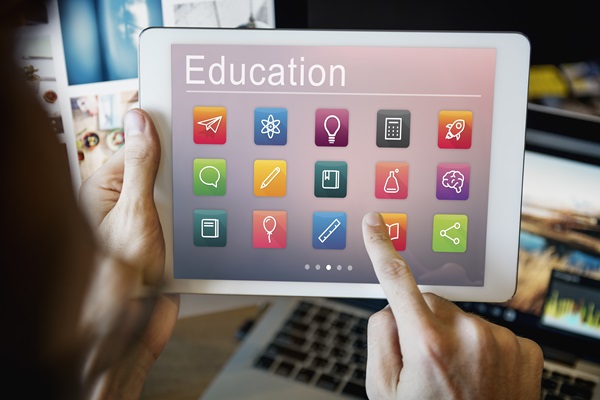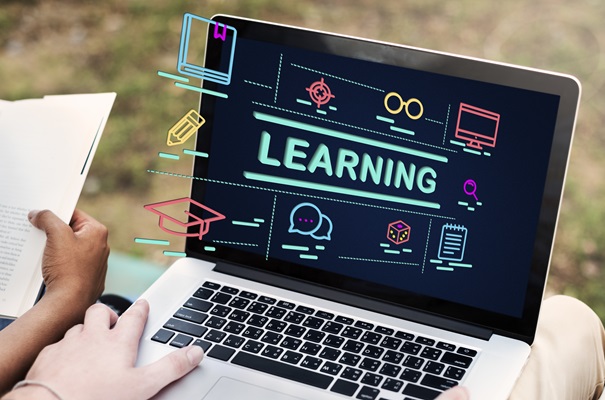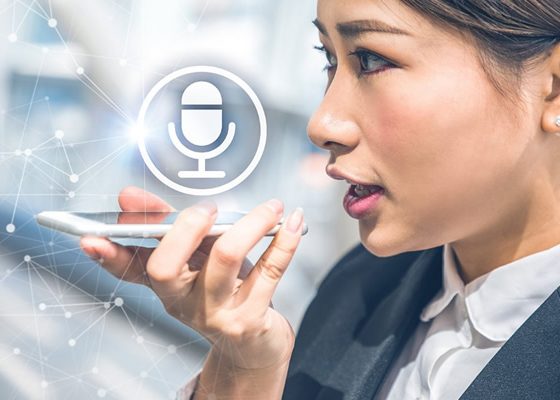In an era of rapid technological advancements, education has undergone a remarkable transformation. Digital Learning Tools, commonly referred to as EdTech, have emerged as revolutionary companions for both students and teachers. This article provides a comprehensive exploration of the multifaceted world of EdTech, examining its impact, benefits, types, challenges, and future prospects.

Introduction
The Evolution of Education Technology
The journey of education technology is a tale of constant evolution. From the inception of chalkboards and overhead projectors to today’s interactive digital learning tools and platforms, education has embraced innovation. In this age, the chalk dust has been replaced with pixels, and traditional textbooks are increasingly making room for e-books.
The Significance of Digital Learning Tools
The significance of EdTech lies not only in its capacity to enhance traditional teaching methods but also in its potential to revolutionize the learning experience. EdTech has the power to foster personalized learning, improve accessibility, and kindle motivation among students. It’s a transformative force in the realm of education.
The Digital Revolution in Education
The Impact of Technology on Teaching and Learning
Technology has permeated classrooms, redefining the teaching and learning landscape. Educators now have access to a wealth of resources, allowing them to adapt their teaching methods to suit individual student needs. Learning is no longer confined to the physical classroom, as technology has extended its reach far beyond the walls of a school.
The Rise of EdTech Companies
A flourishing ecosystem of EdTech companies has emerged to meet the growing demand for digital learning tools and solutions. These companies span the gamut, from startups with novel concepts to established giants, each contributing to the evolution of education.
Benefits of Using EdTech
Personalized Learning Opportunities
One of the standout advantages of EdTech is its ability to provide personalized learning experiences. Adaptive learning platforms, for instance, use algorithms to tailor educational content to the unique needs and progress of each student. This individualized approach ensures that no student is left behind.
Improved Accessibility and Inclusivity
EdTech has made great strides in enhancing accessibility for students with disabilities. Screen readers, speech recognition software, and other assistive technologies have made learning more inclusive than ever. Digital learning tools break down physical and geographical barriers, bringing education to those who were once marginalized.
Enhanced Engagement and Motivation
Gone are the days of uninspiring lectures. EdTech introduces gamification elements, interactive content, and multimedia resources that engage students on a whole new level. Learning becomes not just a chore but an enjoyable experience, spurring motivation.
Types of Digital Learning Tools
Learning Management Systems (LMS)
LMS platforms have become the backbone of online and blended learning. They facilitate course management, content delivery, and assessment, offering both students and teachers a centralized hub for education.
Interactive E-books and E-readers
The digital realm has breathed new life into the concept of textbooks. Interactive e-books allow for multimedia integration, interactive quizzes, and note-taking capabilities, making learning more engaging.
Virtual Reality (VR) and Augmented Reality (AR) in Education
VR and AR have expanded the horizons of experiential learning. Students can explore historical landmarks, dissect virtual organisms, or immerse themselves in far-off places, all from the comfort of the classroom.
Gamification and Educational Games
Learning through play is no longer an unconventional idea. Educational games and gamified content turn learning into an exciting adventure, fostering skills development in an enjoyable environment.
Online Course Platforms
Online courses have gained immense popularity, offering a diverse array of subjects and expertise. Whether it’s mastering a new language, delving into a technical skill, or exploring a hobby, there’s a course for everyone.
Video Conferencing and Webinars
Especially prominent in the age of remote learning, video conferencing, and webinars have redefined how students and teachers interact. They facilitate real-time discussions, lectures, and collaborative projects.
Top EdTech Companies
The EdTech landscape is crowded with a myriad of companies, both established and emerging. Notable mentions include Edmodo, Coursera, Duolingo, Khan Academy, and many more. These companies have etched their names in the annals of education transformation.
Challenges in Implementing EdTech
Technical Issues and Infrastructure Concerns
As transformative as EdTech can be, it’s not without its challenges. Insufficient technological infrastructure, unreliable internet access, and hardware limitations can create barriers to effective EdTech integration.
Privacy and Security Considerations
Protecting student data is of paramount importance. With EdTech collecting vast amounts of information, ensuring stringent data protection measures is essential to prevent breaches and safeguard student privacy.
Teacher Training and Digital Literacy
Teachers, the stewards of education, need to adapt to the digital age. Many educators require training to effectively leverage EdTech tools, and fostering digital literacy among teachers is a fundamental necessity.
Digital Learning Tools for Students
Adaptive Learning Platforms
Adaptive learning platforms, such as DreamBox and Knewton, use machine learning algorithms to adjust the difficulty of content based on a student’s proficiency level, providing a tailored learning journey.
Online Tutoring and Homework Help Services
Websites like Khan Academy and Chegg offer online tutoring and homework help, providing students with on-demand support and assistance.
Interactive Study Apps
Interactive study apps, like Quizlet and Anki, offer digital flashcards, quizzes, and games to help students master subjects through active engagement.
Language Learning Applications
Apps such as Duolingo and Rosetta Stone have redefined language learning, offering a playful and effective approach to mastering new languages.
Educational Content Creation Tools
EdTech tools like Canva and Padlet empower students to become creators, enabling them to design presentations, infographics, and collaborative projects.
Digital Learning Tools for Teachers
Classroom Management Software
Tools like ClassDojo and Edsby assist teachers in maintaining classroom discipline, tracking student behavior, and communicating with parents.
Assessment and Grading Tools
Grading is streamlined with EdTech. Platforms like Turnitin and Gradescope simplify the assessment process, reducing administrative burdens on educators.
Professional Development Resources
Teachers can continually expand their skills with the aid of resources like EdSurge and Edutopia, offering articles, webinars, and courses for professional development.
Curriculum Planning and Design Platforms
Apps such as Planboard and Eduphoria help teachers organize lesson plans, align them with educational standards, and ensure a coherent curriculum.
Teacher Collaboration and Networking Platforms
Platforms like EdConnect and Edmodo foster collaboration among teachers, allowing them to share resources and insights, thereby enhancing the teaching community.

Trends in EdTech
Artificial Intelligence and Machine Learning in Education
AI and machine learning are poised to revolutionize education by providing data-driven insights, predictive analytics, and personalized recommendations for students.
Microlearning and Bite-sized Content
Microlearning offers short, focused lessons that cater to modern attention spans, making it easier for students to digest and retain information.
Mobile Learning Solutions
As mobile devices become ubiquitous, EdTech is adapting to meet students where they are, offering a flexible and on-the-go learning experience.
Data Analytics and Learning Analytics
Data analysis and learning analytics enable educators to gain deep insights into student progress, helping them make informed decisions to improve learning outcomes.
The Future of EdTech
Predictions for the Next Decade in Education Technology
The future of EdTech is brimming with possibilities. Expect advancements in AI-driven tutoring, virtual laboratories, and interactive simulations, providing immersive and enriching learning experiences.
The Role of EdTech in Post-pandemic Education
The COVID-19 pandemic has accelerated the adoption of EdTech. Even as the world recovers, EdTech is expected to remain a vital component of the educational landscape, offering blended learning opportunities and robust contingency plans.
Case Studies: Success Stories
Schools and Districts Implementing EdTech Successfully
Across the globe, schools and districts are witnessing transformative success through EdTech integration. From underserved communities to prestigious institutions, these case studies demonstrate the remarkable potential of digital learning tools in education.
How EdTech Transformed Learning Experiences
The stories of students and teachers experiencing a paradigm shift in their learning and teaching methods are testimonies to the enduring impact of EdTech. These success stories serve as beacons of hope and inspiration.
EdTech and Remote Learning
The Role of Digital Learning Tools During Remote Learning
The COVID-19 pandemic forced an unprecedented shift to remote learning, putting EdTech in the spotlight. It served as a lifeline, allowing students to continue their education from the safety of their homes.
Lessons Learned from the COVID-19 Pandemic
The pandemic shed light on the strengths and weaknesses of EdTech. As we look beyond the crisis, we must learn from the experience to refine and optimize its use in education.
EdTech in Higher Education
The Impact of EdTech on Colleges and Universities
Higher education institutions are leveraging EdTech to diversify their course offerings, reach global audiences, and provide students with more flexible learning options.
Blended Learning Models in Higher Ed
Blended learning, which combines in-person and online instruction, is becoming a hallmark of higher education. It offers students a multifaceted learning experience, promoting both flexibility and interaction.
Ethical Considerations in EdTech
Data Privacy and Student Information Protection
As EdTech collects vast amounts of student data, concerns over data privacy and security have grown. Stricter regulations and ethical considerations are paramount in safeguarding sensitive information.
Ensuring Equity and Access for All Students
EdTech must strive for inclusivity and accessibility, addressing the digital divide and ensuring that all students, regardless of their background, have equal opportunities to benefit from digital learning tools.
Addressing Screen Time and Digital Addiction Concerns
The pervasive use of screens in education raises questions about screen time and digital addiction among students. Striking a balance between online and offline activities is essential for their well-being.
Best Practices for EdTech Integration
Strategies for Successful Implementation
Successful EdTech integration requires careful planning, stakeholder involvement, and alignment with educational objectives. The right strategy can make a significant difference in the impact of digital learning tools.
Aligning EdTech with Curriculum and Learning Objectives
EdTech should be seamlessly integrated into the curriculum, aligning with learning objectives and enhancing the educational experience.
Measuring the Impact of EdTech on Student Outcomes
Quantifying the impact of EdTech is vital. Collecting data and conducting assessments can help educators understand its effectiveness and make informed decisions.
Research on EdTech Efficacy
Studies and Findings on the Effectiveness of Digital Learning Tools
The efficacy of EdTech is not a matter of opinion; it’s a matter of data. Numerous studies have been conducted to understand the impact of digital learning tools on student performance, and the results are illuminating.
Identifying Best Practices Based on Research
Research outcomes provide valuable insights into best practices for EdTech integration, helping educators and institutions make informed decisions.

EdTech and Global Education
Cross-cultural Perspectives on EdTech Adoption
EdTech is not confined to one geographic location; it has a global footprint. Its impact varies across cultures and regions, highlighting the need for adaptable solutions.
International Collaborations and Initiatives in EdTech
International collaborations in EdTech are paving the way for innovation and the sharing of best practices on a global scale.
Investing in EdTech
The Financial Aspect of EdTech Adoption
Investing in EdTech is not just an educational decision; it’s also a financial one. Schools and institutions must carefully allocate budgets to procure the best tools for their specific needs.
Funding and Grants for EdTech Initiatives
Funding and grants play a pivotal role in supporting EdTech initiatives, enabling educational institutions to access the resources they need to enhance learning.
Feedback and User Experience
The Role of Student and Teacher Feedback
Feedback is a crucial component of EdTech improvement. Students and teachers provide invaluable insights that can shape the evolution of digital learning tools.
Evaluating the User Experience of Digital Learning Tools
A seamless user experience is integral to the success of EdTech. Assessing the ease of use, accessibility, and engagement of digital learning tools is essential.
EdTech for Special Education
Assistive Technology for Students with Disabilities
EdTech offers a spectrum of assistive technology, aiding students with disabilities in achieving their full potential. From screen readers to speech recognition software, these tools bridge gaps and level the playing field.
Inclusive Practices and Accessibility in EdTech
EdTech must adopt universal design principles to ensure that all students, including those with disabilities, can access and benefit from digital learning tools.
EdTech and Lifelong Learning
Digital Learning Tools for Adult Education and Professional Development
The application of EdTech extends beyond the classroom. Adult learners and professionals are increasingly using digital learning tools to upskill, retrain, and expand their knowledge.
The Evolving Role of EdTech in Lifelong Learning
EdTech is becoming an integral part of lifelong learning, catering to the ever-evolving needs of individuals seeking personal and professional growth.
Sustainability in EdTech
Eco-friendly Practices in EdTech Development and Usage
Sustainability is a growing concern in all industries, including EdTech. Developers and users alike must consider the environmental impact of digital learning tools.
Reducing Electronic Waste in Educational Technology
The rapid turnover of electronic devices and accessories in EdTech raises concerns about electronic waste. Sustainable practices, such as device recycling and responsible disposal, are essential.
EdTech Regulations and Policies
Government Regulations and Guidelines for EdTech
Governments and education authorities are developing regulations to ensure the responsible use of EdTech and the protection of student data.
The Role of Education Policymakers in EdTech Integration
Education policymakers play a critical role in shaping the future of EdTech. Their decisions and policies can either promote or hinder the growth of digital learning tools.
EdTech and Parental Involvement
How Parents Can Support Their Children’s Use of Digital Learning Tools
Parents are essential partners in the EdTech journey. They can support their children’s education by staying informed, monitoring screen time, and participating in their learning experiences.
Addressing Concerns and Misconceptions Among Parents
Some parents may have reservations about EdTech. Addressing their concerns and debunking misconceptions can foster a collaborative environment between parents and educators.
Conclusion
The Evolving Landscape of Education Technology
EdTech has come a long way, and it shows no signs of slowing down. Its potential to enhance education, personalize learning, and foster innovation is immense.
The Lasting Impact of EdTech on the Education Sector
The impact of EdTech is not ephemeral; it’s a revolution that’s reshaping the educational landscape. As students and teachers continue to adapt and adopt these digital learning tools, the future of education is bound to be brighter and more dynamic than ever before.
